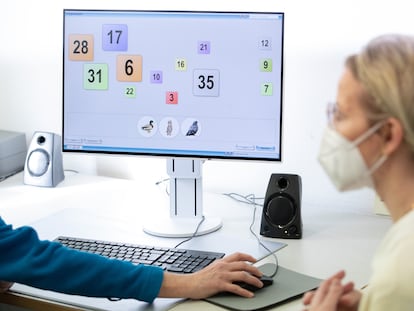Female mouse gives birth without sex or sperm
The experiment by a team of Chinese scientists shows that gene editing can allow mammals to reproduce without fertilization

Chinese scientists have managed to get a female mouse to produce live viable offspring from an unfertilized egg thanks to gene editing. This is in theory the first case of a mammal that has achieved asexual reproduction, technically known as parthenogenesis or “virgin creation,” which is common in many insects and reptiles, and even in some bird species. But until very recently, it was believed that mammals could not reproduce without male genetic material.
In 2004, the world learned about Kaguya, a mouse born without the need for sperm or sexual reproduction. Mammals have two copies of each gene in their genome – one from their mother and one from their father. When a sperm cell penetrates an egg, something called genomic imprinting happens, meaning that some genes behave differently depending on whether they were inherited from the father or the mother.
Many of the genes involved in the process have to do with growth, which may mean, for evolutionary reasons, that the father’s “imprint” favors growth in order to have larger offspring, while the mother’s may do the opposite to ensure that the pregnancy can be brought to term. Some of these genes are also associated with a greater risk of suffering cancer, among other diseases. The Japanese scientists who created Kaguya used two eggs: one worked as the real egg while the other one imitated the sperm’s contribution. The result was a baby that was born to two females.
The new study, led by Yanchang Wei, a reproductive medicine researcher at Ren Ji Hospital in Shanghai, took the concept a step further, creating a pregnancy from a single, unfertilized egg. Chinese scientists used a gene-editing technique very similar to CRISPR, which is used in medicine and biotechnology. The authors of the study used the tool to imitate the genomic imprint in seven different points of the genome of an egg that already had two copies of each gene. This triggered a biochemical process that was the equivalent of fertilization: the egg grew from one single cell to a 140-cell blastocyst.
They’ve managed something fascinating but terribly inefficientDavid Haig, Harvard University
The scientists implanted 192 embryos made with this technique in as many female mice, but only one of them gave birth to a healthy pup that survived, although it weighed less than average. Two others died shortly after birth. The survivor reached adulthood and was able to reproduce normally.
In their study, published in the scientific journal PNAS, researchers noted that “parthenogenesis can be achieved by targeted epigenetic rewriting of multiple critical imprinting control regions.” The team believes that the technique could be perfected to achieve a higher live birth success rate. “The success of parthenogenesis in mammals opens many opportunities in agriculture, research, and medicine,” says the study.
“It is a groundbreaking study,” agrees Lluis Montoliu, a researcher at Spain’s National Research Council (CSIC), who underscored that the eggs had a copy of their genes and another copy taken from another egg that came from a different species of mouse, allowing scientists to check the effects of the editing. In theory at least, further perfecting this technique might allow a woman to have children on her own, admits Montoliu. But the researcher adds that its use on humans is a very long way off. “The main thing now is to follow the lives of these mice born through these techniques, and see whether they have problems with their lives and reproduction. There are still a lot of unanswered questions.”
“They’ve managed something fascinating but terribly inefficient,” adds David Haig, a researcher at Harvard University who developed a theory about genomic imprinting several years ago.
Tu suscripción se está usando en otro dispositivo
¿Quieres añadir otro usuario a tu suscripción?
Si continúas leyendo en este dispositivo, no se podrá leer en el otro.
FlechaTu suscripción se está usando en otro dispositivo y solo puedes acceder a EL PAÍS desde un dispositivo a la vez.
Si quieres compartir tu cuenta, cambia tu suscripción a la modalidad Premium, así podrás añadir otro usuario. Cada uno accederá con su propia cuenta de email, lo que os permitirá personalizar vuestra experiencia en EL PAÍS.
¿Tienes una suscripción de empresa? Accede aquí para contratar más cuentas.
En el caso de no saber quién está usando tu cuenta, te recomendamos cambiar tu contraseña aquí.
Si decides continuar compartiendo tu cuenta, este mensaje se mostrará en tu dispositivo y en el de la otra persona que está usando tu cuenta de forma indefinida, afectando a tu experiencia de lectura. Puedes consultar aquí los términos y condiciones de la suscripción digital.
More information
Últimas noticias
Most viewed
- David King, chemist: ‘There are scientists studying how to cool the planet; nobody should stop these experiments from happening’
- Mexico completes its trade shift with the entry into force of tariffs on China and countries without trade agreements
- Reinhard Genzel, Nobel laureate in physics: ‘One-minute videos will never give you the truth’
- Oona Chaplin: ‘I told James Cameron that I was living in a treehouse and starting a permaculture project with a friend’
- Sinaloa Cartel war is taking its toll on Los Chapitos











































